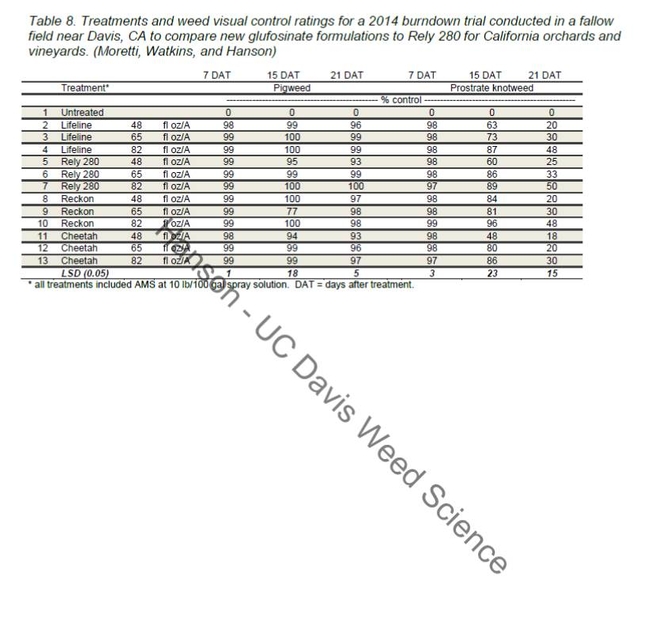For the past couple of years, an important postemergence herbicide active ingredient, glufosinate-ammonium, used in orchards and vineyards has been in pretty short supply (see my earlier post about Rely 280 scarcity).
This was largely due to supply issues caused by unexpectedly high demand in the South and Midwest due by herbicide resistant weeds (particularly Palmer amaranth). The resulting manufacturer supply bottleneck has caused a few weed management challenges (and high prices for limited supply!) in some regions of the state, particularly for growers dealing with our own glyphosate-resistant weed problems in trees and vines.
The US patent on that active ingredient expired a couple years ago and several manufacturers have been pushing to get their versions of a glufosinate herbicide into the California market. I knew several product submissions had been submitted to the California Department of Pesticide Regulation for consideration and were winding through the process. Today I received notification that one of them had been approved so I thought I'd update readers of this blog.
Currently registered glufosinate herbicides for some California orchard and vineyard crops (check labels for specific crops - there are a few "slight" differences).
- Rely 280. Bayer Crop Sciences. 2.34 lb/gal (280 g/L) formulation
- Reckon 280SL. Solara ATO. 2.34 lb/gal (280 g/L) formulation
- Glufosinate 280SL. Willowood USA. 2.34 lb/gal (280 g/L) formulation
- Forfeit 280. Loveland Products. 2.34 lb/gal (280 g/L) formulation
- Refer 280SL. Summit Agro. 2.34 lb/gal (280 g/L) formulation
- Lifeline. United Phosphorus Inc. 2.34 lb/gal (280 g/L) formulation (very recently registered but was not listed on Agrian as of this post)
- Additionally, I know of at least one other product, Cheetah from NuFarm, that is winding it's way through CDPR but does not yet have California registration but is expected "any day". There may also be others in process that I'm not aware of.
One good thing compared to a few other herbicides with many manufacturers is that all these glufosinate products have the same active ingredient concentration in the jug (280 g/L = 2.34 lb ai/gal) which makes rate comparisons among products a lot easier.
Now, before I get a bunch of emails from product reps telling why their product is actually much better than the others (and I'm sure they are), I will acknowledge that these products have different surfactant packages and formulation technologies which could affect weed control performance. However, in a few limited field tests of some of these herbicides, I didn't notice any striking differences among the ones I tested (see one example data table below).
All in all, I think that as the supply chain and inventory of these products fills up in California we should see the glufosinate shortage of the past couple years greatly reduced. This herbicide active ingredient (and mode of action) is an important component of many weed control programs but will need to be used carefully just as any herbicide should be in order to: effectively and economically control weeds, protect the environment, minimize potential for crop injury, and minimize selection of resistant weeds.
Take care,
Brad
